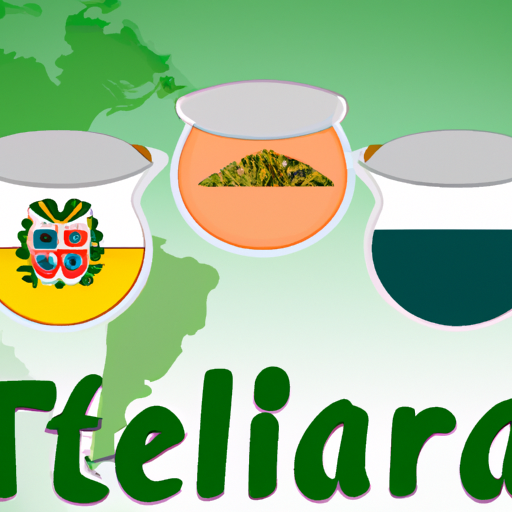The Tea Scene in Latin America: Exploring the Rich Culture and Diverse Flavors
As you sip and savor your way through our Tea Treasury, we take great delight in uncovering flavors, traditions, and habits that span continents and cultures, all in the name of tea. Today's brew comes with a Latin twist, as we venture into the vibrant and often underexplored world of Latin American teas. So, ¡Vamos a seguir leyendo! (Let's keep reading!)
I. A Brief Tea History in Latin America
While tea is not indigenous to Latin America, it has a long history in the region. Tea was introduced to Latin America by Europeans, who brought the beverage with them during colonization. As trade grew between Europe and Asia in the 19th century, so too did the presence of tea in this part of the world.
In some countries, like Argentina, tea gained such popularity that it became an important crop, fueling the establishment of tea estates and farms. While South America is not typically recognized as a world leader in tea production, Argentina ranks among the top ten producers globally. Nevertheless, the tea scene in Latin America has evolved dramatically over the past few centuries, prompting local tea connoisseurs to innovate and create new flavors and practices representative of their culture.
II. From Mate to Oolong: Iconic Teas of Latin America
1. Yerba Mate
You can't discuss tea in Latin America without diving into yerba mate, which hails from the region known as the Southern Cone (Argentina, Uruguay, Paraguay, and southern Brazil). Made from the dried leaves of the Ilex paraguariensis plant, mate is usually consumed in a social setting, steeped in hot water and sipped through a metal straw called a bombilla.
| Yerba Mate Benefits | Potential Downsides |
|---|---|
| Rich source of antioxidants | High caffeine content (>100 mg*cup) |
| Enhances mental focus | Possible interaction with medications |
| Boosts immune system | Risk of esophageal cancer if consumed very hot |
| Aids digestion |
2. Oolong in Colombia
Although oolong originates from China, Colombia has recently begun experimenting with oolong teas. Thanks to its diverse landscapes and ideal growing conditions, certain Colombian farms have dabbled in this tea variety, producing unique and high-quality aromatic beverages that are sought after by collectors.
3. Local Blends
In many countries across the region, ancient plant medicine traditions persist today, with local herbs being combined into tea blends. Some popular examples include:
- Seven Stars Tea (Peru): A blend of wild Andean herbs believed to cleanse the body and promote a feeling of wellbeing.
- Coca Tea (Bolivia, Peru, and Ecuador): A controversial, yet culturally significant tea made from the leaves of the coca plant.
- Guayusa (Ecuador): A highly caffeinated brew made from the leaves of the holly species Ilex guayusa, which is related to yerba mate, and is said to enhance mental clarity and focus.
III. The Modern Latin American Tea Movement
In recent years, tea culture in Latin America has started gaining a new level of recognition. From dedicated tea houses to specialized tea sellers, the tea scene is thriving in metropolitan centers like Buenos Aires, Mexico City, and Lima, fueled by a growing interest in global tea culture and traditional Latin American infusions.
Elegant tea rooms and lounges have become increasingly popular, offering not only the classic Earl Grey and chamomile but also blending the best of the Latin American traditions with international tea customs. From matcha lattes to complex tea cocktails, Latin America's tea culture reflects its vibrant, diverse, and lively nature.
IV. Brewing a Fresh Perspective
As we take our last sip of this Latin American tea journey, we are reminded that good things often come in unexpected packages. While not historically the epicenter of tea cultivation or consumption, as Henriette Klauser once said, "Latins are tenderly enthusiastic," and they have woven tea into their culture in ways that make it truly delightful and, dare we say, caliente.
We hope this brief introduction to the tea scene in Latin America leaves you thirsty for more. Perhaps you'll even be inspired to experiment with Latin-inspired tea blends, savor a cup of guayusa or mate, or trade in your trusty teacup for a colorful gourd while you share your thoughts, experiences, and reflections on this fascinating region's tea culture in the discussion section below.
¡Salud y hasta la próxima! (Cheers and until next time!)
